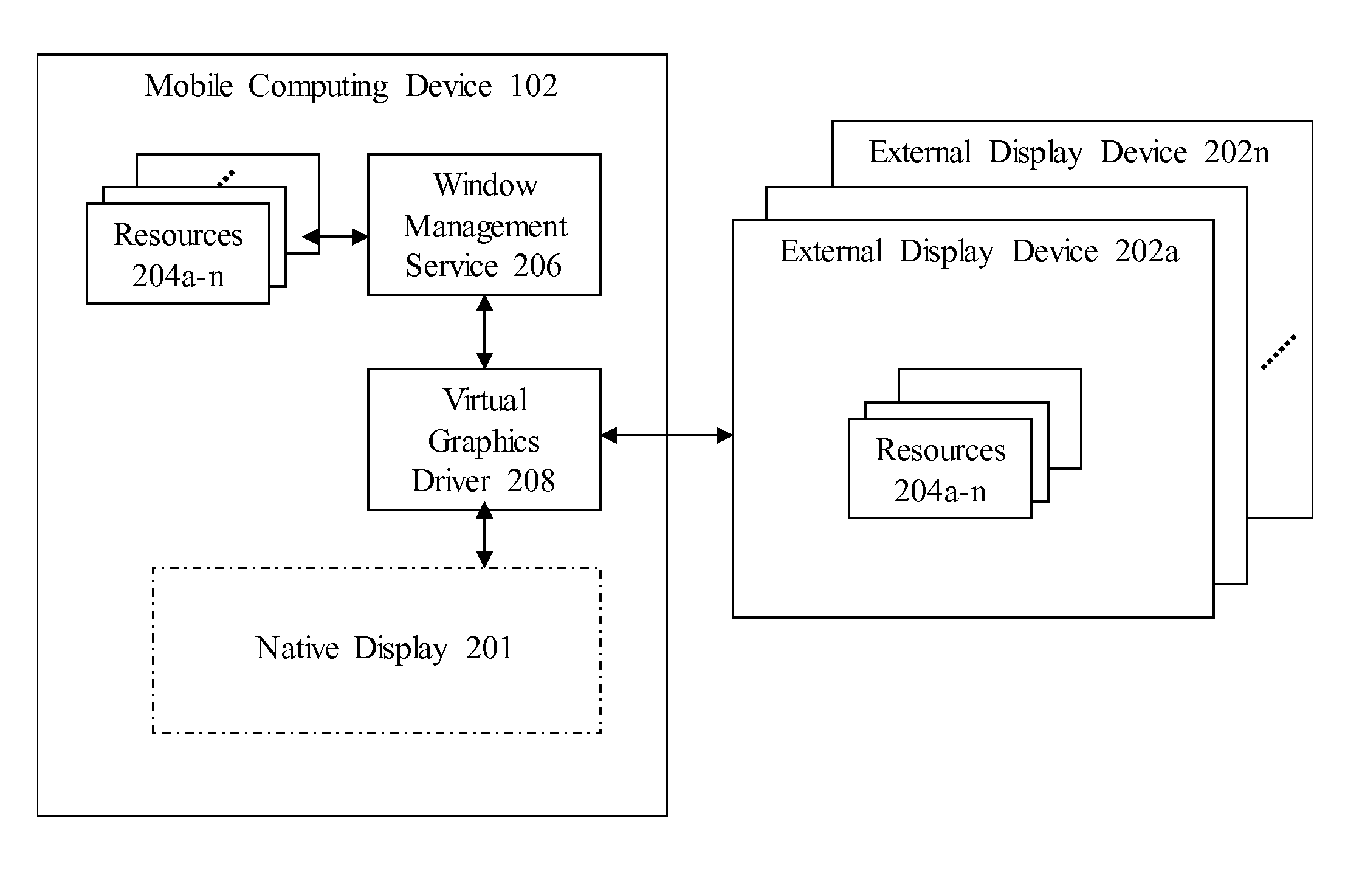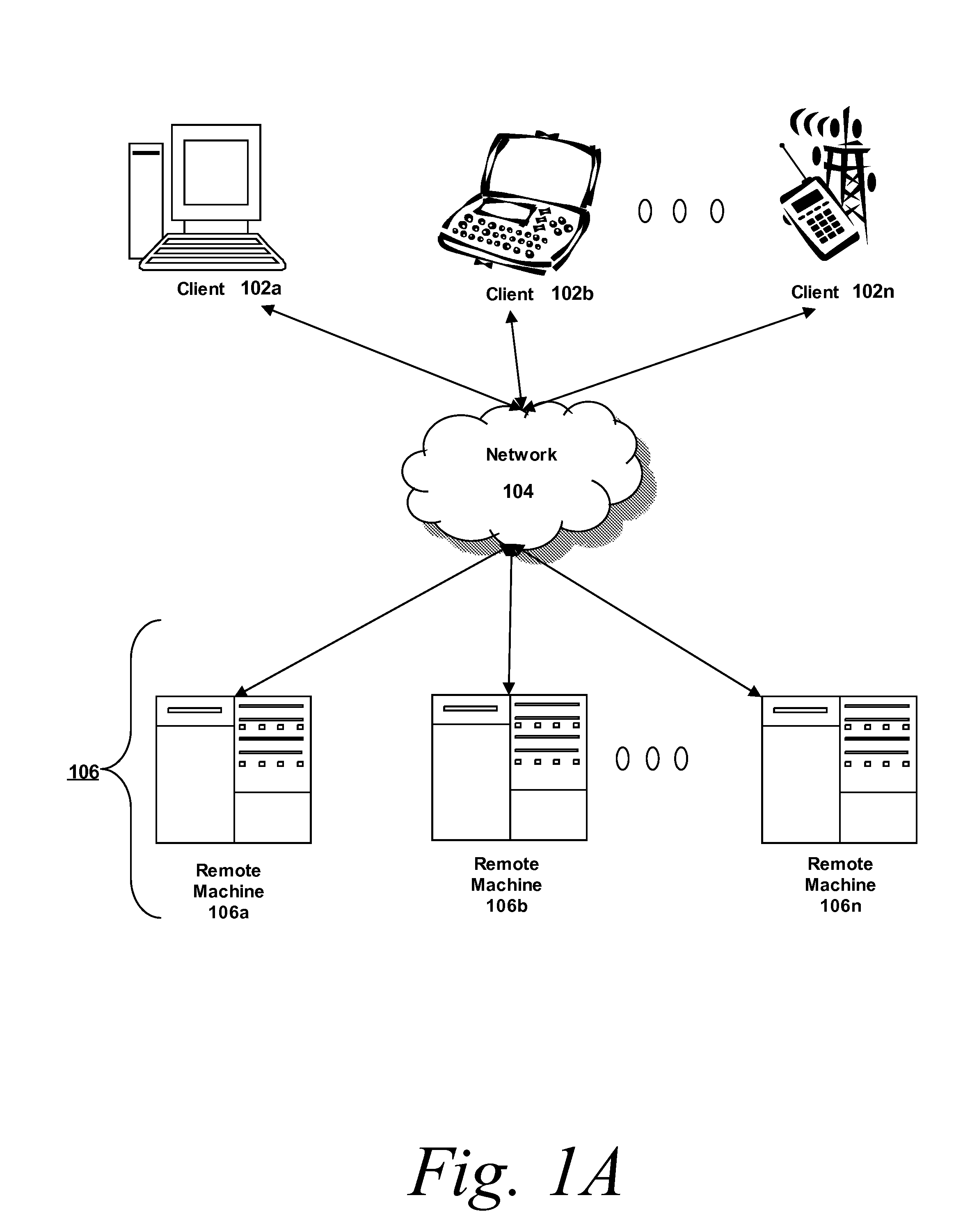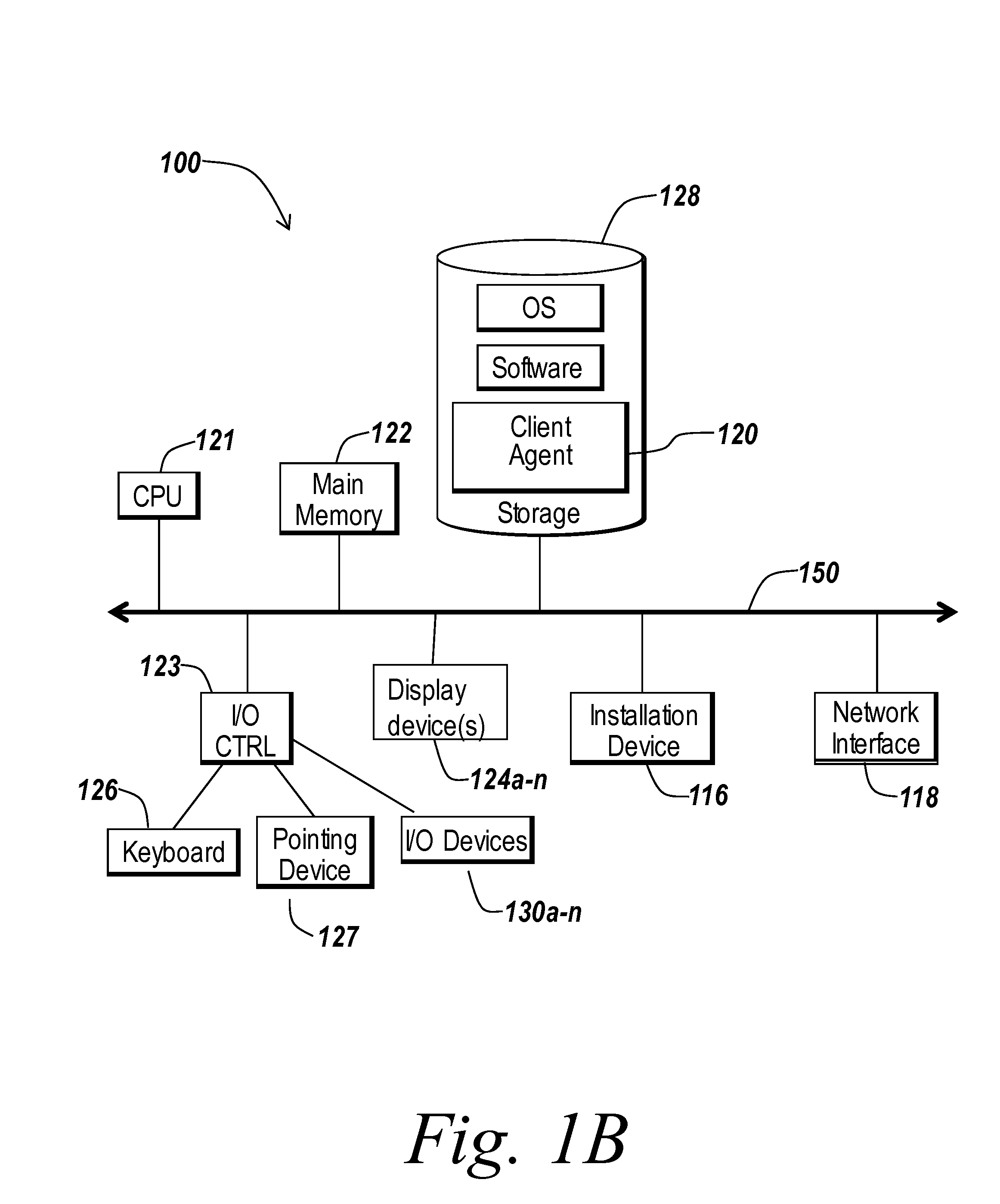Touch Support for Remoted Applications
a technology for remote applications and touch input, applied in the field of supporting touch input in an application, can solve problems such as processing obstacles, and achieve the effect of facilitating the establishment of a first connection
- Summary
- Abstract
- Description
- Claims
- Application Information
AI Technical Summary
Benefits of technology
Problems solved by technology
Method used
Image
Examples
Embodiment Construction
[0045]Applications may be executed remotely by a first computing device for use at a second computing device (e.g., a client device). By using a remoted application, the client device may use processing power by the first computing device to execute the functionality and features of the remoted application. Additionally, data and applications may be served at a location that is accessible from multiple remote locations (e.g., through a public and / or private network).
[0046]FIG. 1A illustrates an example computing environment 101 that includes one or more client machines 102A-102N (collectively referred to herein as “client machine(s) 102”) that are in communication with one or more servers 106A-106N (generally referred to herein as “server(s) 106”). Installed in between the client machine(s) 102 and server(s) 106 is a network.
[0047]In one example, the computing environment 101 can include an appliance (e.g., a device or apparatus) installed between the server(s) 106 and client machin...
PUM
 Login to View More
Login to View More Abstract
Description
Claims
Application Information
 Login to View More
Login to View More - R&D
- Intellectual Property
- Life Sciences
- Materials
- Tech Scout
- Unparalleled Data Quality
- Higher Quality Content
- 60% Fewer Hallucinations
Browse by: Latest US Patents, China's latest patents, Technical Efficacy Thesaurus, Application Domain, Technology Topic, Popular Technical Reports.
© 2025 PatSnap. All rights reserved.Legal|Privacy policy|Modern Slavery Act Transparency Statement|Sitemap|About US| Contact US: help@patsnap.com



